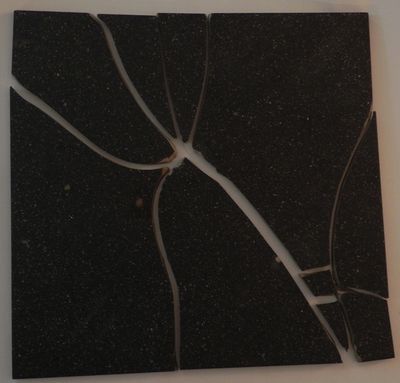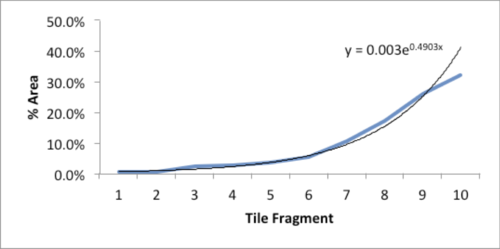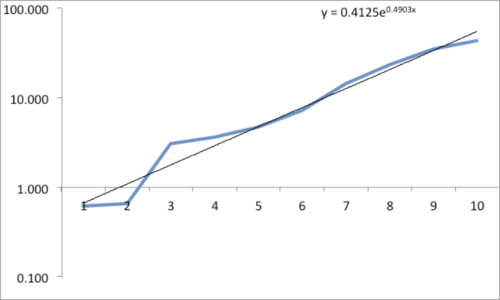Sandbox: Difference between revisions
No edit summary |
|||
| Line 1: | Line 1: | ||
== | ==How not to describe a CI== | ||
Jeff Witmer sent the following to the Isolated Statisticans list, | |||
<blockquote> | |||
The plus/minus numbers, which are presented in the data tables of the monthly and annual Global State of the Climate reports, indicate the range of uncertainty (or "range") of the reported global temperature anomaly. For example, a reported global value of +0.69°C ±0.09°C indicates that the most likely value is 0.69°C warmer than the long-term average, but, conservatively, one can be confident that it falls somewhere between 0.60°C and 0.78°C above the long-term average. More technically, it is 95% likely that the value falls within this range. The chance of the actual value being at or beyond the range on the warm side is 2.5% (one in forty chance). Likewise, the chance of the actual value being at or beyond the cool end of the range is 2.5% (one in forty chance). | |||
</blockquote> | |||
[http://www.nytimes.com/2015/01/04/opinion/sunday/playing-dumb-on-climate-change.html Playing Dumb on Climate Change] by Naomi Orestes, New York Times, 5 January 2015 | |||
<blockquote> | <blockquote> | ||
Typically, scientists apply a 95 percent confidence limit, meaning that they will accept a causal claim only if they can show that the odds of the relationship’s occurring by chance are no more than one in 20. But it also means that if there’s more than even a scant 5 percent possibility that an event occurred by chance, scientists will reject the causal claim. | |||
</blockquote> | </blockquote> | ||
==More on Gini== | ==More on Gini== | ||
The analysis received news coverage elsewhere, for example: | The analysis received news coverage elsewhere, for example: | ||
| Line 67: | Line 63: | ||
Submitted by William Montante | Submitted by William Montante | ||
Revision as of 16:58, 17 January 2015
How not to describe a CI
Jeff Witmer sent the following to the Isolated Statisticans list,
The plus/minus numbers, which are presented in the data tables of the monthly and annual Global State of the Climate reports, indicate the range of uncertainty (or "range") of the reported global temperature anomaly. For example, a reported global value of +0.69°C ±0.09°C indicates that the most likely value is 0.69°C warmer than the long-term average, but, conservatively, one can be confident that it falls somewhere between 0.60°C and 0.78°C above the long-term average. More technically, it is 95% likely that the value falls within this range. The chance of the actual value being at or beyond the range on the warm side is 2.5% (one in forty chance). Likewise, the chance of the actual value being at or beyond the cool end of the range is 2.5% (one in forty chance).
Playing Dumb on Climate Change by Naomi Orestes, New York Times, 5 January 2015
Typically, scientists apply a 95 percent confidence limit, meaning that they will accept a causal claim only if they can show that the odds of the relationship’s occurring by chance are no more than one in 20. But it also means that if there’s more than even a scant 5 percent possibility that an event occurred by chance, scientists will reject the causal claim.
More on Gini
The analysis received news coverage elsewhere, for example:
- How airline seating reflects income inequality
- by Michael Hiltzik, Los Angeles Times, 2 December 2014
Some math doodles
<math>P \left({A_1 \cup A_2}\right) = P\left({A_1}\right) + P\left({A_2}\right) -P \left({A_1 \cap A_2}\right)</math>
Accidental insights
My collective understanding of Power Laws would fit beneath the shallow end of the long tail. Curiosity, however, easily fills the fat end. I long have been intrigued by the concept and the surprisingly common appearance of power laws in varied natural, social and organizational dynamics. But, am I just seeing a statistical novelty or is there meaning and utility in Power Law relationships? Here’s a case in point.
While carrying a pair of 10 lb. hand weights one, by chance, slipped from my grasp and fell onto a piece of ceramic tile I had left on the carpeted floor. The fractured tile was inconsequential, meant for the trash.

As I stared, slightly annoyed, at the mess, a favorite maxim of the Greek philosopher, Epictetus, came to mind: “On the occasion of every accident that befalls you, turn to yourself and ask what power you have to put it to use.” Could this array of large and small polygons form a Power Law? With curiosity piqued, I collected all the fragments and measured the area of each piece.
| Piece | Sq. Inches | % of Total |
|---|---|---|
| 1 | 43.25 | 31.9% |
| 2 | 35.25 | 26.0% |
| 3 | 23.25 | 17.2% |
| 4 | 14.10 | 10.4% |
| 5 | 7.10 | 5.2% |
| 6 | 4.70 | 3.5% |
| 7 | 3.60 | 2.7% |
| 8 | 3.03 | 2.2% |
| 9 | 0.66 | 0.5% |
| 10 | 0.61 | 0.5% |

The data and plot look like a Power Law distribution. The first plot is an exponential fit of percent total area. The second plot is same data on a log normal format. Clue: Ok, data fits a straight line. I found myself again in the shallow end of the knowledge curve. Does the data reflect a Power Law or something else, and if it does what does it reflect? What insights can I gain from this accident? Favorite maxims of Epictetus and Pasteur echoed in my head: “On the occasion of every accident that befalls you, remember to turn to yourself and inquire what power you have to turn it to use” and “Chance favors only the prepared mind.”

My “prepared” mind searched for answers, leading me down varied learning paths. Tapping the power of networks, I dropped a note to Chance News editor Bill Peterson. His quick web search surfaced a story from Nature News on research by Hans Herrmann, et. al. Shattered eggs reveal secrets of explosions. As described there, researchers have found power-law relationships for the fragments produced by shattering a pane of glass or breaking a solid object, such as a stone. Seems there is a science underpinning how things break and explode; potentially useful in Forensic reconstructions. Bill also provided a link to a vignette from CRAN describing a maximum likelihood procedure for fitting a Power Law relationship. I am now learning my way through that.
Submitted by William Montante